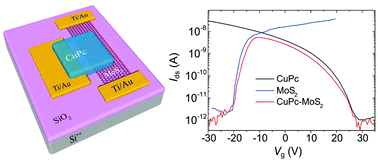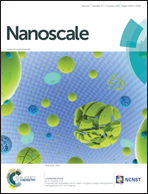Gate-tunable diode and photovoltaic effect in an organic–2D layered material p–n junction†
Abstract
The semiconducting p–n junction is a simple device structure with great relevance for electronic and optoelectronic applications. The successful integration of low-dimensional materials in electronic circuits has opened the way forward for producing gate-tunable p–n junctions. In that context, we present here an organic (Cu-phthalocyanine)–2D layered material (MoS2) hybrid p–n junction with both gate-tunable diode characteristics and photovoltaic effect. Our proof-of-principle devices show multifunctional properties with diode rectifying factors of up to 104, while under light exposure they exhibit photoresponse with a measured external quantum efficiency of ∼11%. As for their photovoltaic properties, we found open circuit voltages of up to 0.6 V and optical-to-electrical power conversion efficiency of 0.7%. The extended catalogue of known organic semiconductors and two-dimensional materials offer the prospect for tailoring the properties and the performance of the resulting devices, making organic–2D p–n junctions promising candidates for future technological applications.



 Please wait while we load your content...
Please wait while we load your content...